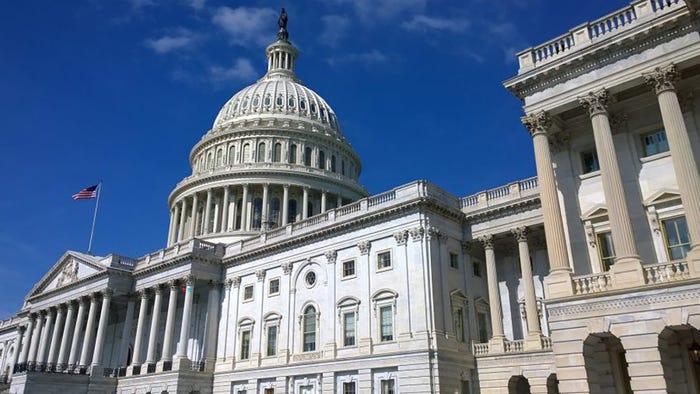
From the early beginnings of the nationwide public-safety broadband network (NPSBN) concept, the network was considered supplemental to existing land-mobile-radio (LMR) communications systems. Certainly, it could be an important supplement to existing mission-critical systems by providing a variety of additional information to first responders, e.g. blueprints of a building for firefighters. The network was also to provide additional interoperability between public-safety agencies on a nationwide basis. But it was not intended to replace local public-safety land-mobile communications systems.
The initial plan for the broadband network was to have it controlled and operated by public-safety entities, although they could award contracts to suppliers, as needed. Through a series of political moves, control was taken away from individual agencies and given to the U.S. Department of Commerce (DoC). The DoC awarded the project to AT&T to build on its own network and on Band 14 spectrum that had been allocated to public safety.
Although recommendations for the buildout included backup power, hardened sites, and redundant backhaul, none of those requirements were put on AT&T. Individual agencies lost control of how the particular system serving them would be constructed and operated. The result is that what is now known as FirstNet is little more reliable than traditional cellular service.
To make FirstNet sound more attractive, the concept of push-to-talk over the IP network was introduced, giving the impression that conversion to FirstNet for dispatch would be more economical than maintaining individual systems, provide better interoperability between agencies, and provide dispatch communications over wider areas. The tradeoff was apparently lower cost over reliability.
There have been numerous examples of failures of carrier networks in hurricanes or other disasters. For those agencies that buy into FirstNet for dispatch services, dispatching stops when the network fails, leaving first responders to fend for themselves.
The good news is that all FirstNet failures had been regional in scope. But the recent failure of the network on a nationwide basis should be real cause for concern. One has to immediately ask, “How can a network be so fragile that it can fail nationwide?” If it fails once, it surely could fail again. Even more disturbing is that it may well be vulnerable to attack by our enemies.
The takeaway story is that smart public-safety agencies will maintain and even upgrade their local land-mobile systems. These systems can be made highly reliable, so they are able to operate even during disastrous events. More importantly, the local agencies can design and control the systems to meet their individual coverage and reliability requirements. Well-designed land mobile systems continue to operate in the most extreme situations.
This brings us to another issue of the day—the FCC’s proceeding regarding 4.9 GHz spectrum.
There are those who advocate that the FirstNet Authority should be awarded a nationwide 4.9 GHz license to add to the capabilities of the broadband network being built and operated by AT&T. The problem is that 4.9 GHz provides backhaul for many land-mobile systems, in addition to other microwave and dedicated fiber circuits.
In addition, 4.9 GHz is used to control robots, communicate with UAVs, support mesh data networks, and many more services that are used locally. Airwaves at 4.9 GHz are used extensively to monitor and control vehicular traffic—a very important function, particularly in an evacuation situation, when carrier systems are most likely to be down.
Taking 4.9 GHz from local public safety control and giving it to FirstNet removes part of what makes land mobile so reliable and gives the resource to an entity that may not be so reliable. Allowing the existing public-safety frequency coordinators to manage 4.9 GHz keeps the resource with public safety and will assure greater reliability of communications circuits.
There are two very important lessons that should be learned from the recent AT&T nationwide network failure. First, no public-safety entity should rely solely on the FirstNet network to provide mission-critical communications. Local communications systems should remain the backbone of local voice and data dispatch systems.
The lives of the first responders and the citizens in the communities require the reliability that local land-mobile systems provide. Use FirstNet for non-mission-critical applications, not for police-officer dispatch.
Second, the FCC should not give any consideration to giving 4.9 GHz to FirstNet. This spectrum plays an important role in the design of local communications systems. Control of the spectrum needs to remain with public safety, not a commercial carrier.
Ralph Haller is Executive Director of the Forestry Conservation Communications Association (FCCA), one of the FCC-certified public-safety frequency-coordinating committees. His background includes 25 years at the FCC, many of which were as chief of the bureau that regulated public-safety communications systems and spectrum. He was instrumental in the early concept and design of the NPSBN. He has more than 50 years of experience in communications and spectrum management.






